- Parisa Adhami
- information
- 612 views
- 0 comments
One of Iran's most notable and striking architectural examples is the Sio-Se-Pol, also called the Allahverdi Khan Bridge. This ancient bridge, which crosses the Zayanderud River in the city of Isfahan and was constructed in the early 17th century during the reign of Shah Abbas I of the Safavid Dynasty, is a testament to Persian architecture, beauty, inventiveness, and cultural legacy.
Its 33 arches—thus the name "Sio-Se-Pol," or "Bridge of 33 Arches"—make this amazing bridge a work of art and engineering that captures the beauty of the Safavid era and the significance of Isfahan as the capital of the empire. This essay analyses the Sio-Se-Pol's history, architecture, cultural significance, and legacy, emphasizing its function as a gathering spot for people of all ages and as a monument to Persian craftsmanship.
Table Of Content
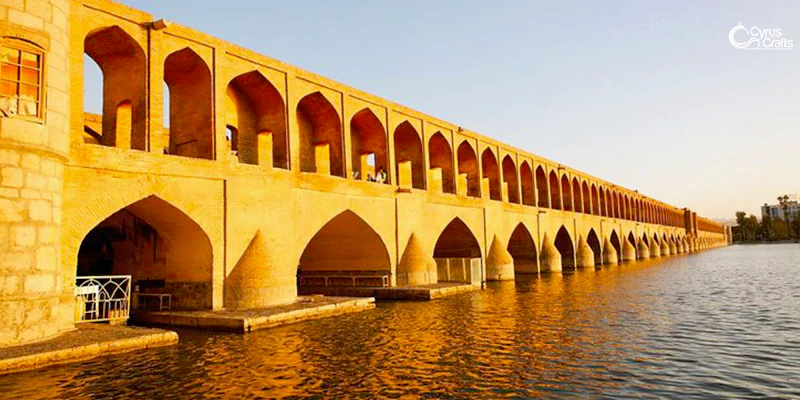
Cyrus Crafts; Luxury & Unique Products
The History of Sio-Se-Pol
One of Iran's most powerful rulers, Shah Abbas I, ordered the Sio-Se-Pol bridge to be built to transform Isfahan into a political, cultural, and architectural wonder. One of Shah Abbas's closest advisors, the Georgian-Iranian general Allahverdi Khan Undiladze, designed the bridge, which functioned as a workable crossing and a mark for cultural exchange.
The strategic choice to create Sio-Se-Pol across the Zayanderud River linked key areas of the city. It served as a vital gateway for the main Chahar Bagh Avenue, a magnificent boulevard filled with palaces and gardens that defined the wealth and aesthetic sensibility of Safavid Isfahan. In addition to being a useful way to cross the river, Sio-Se-Pol served as a demonstration of Safavid strength and artistry.
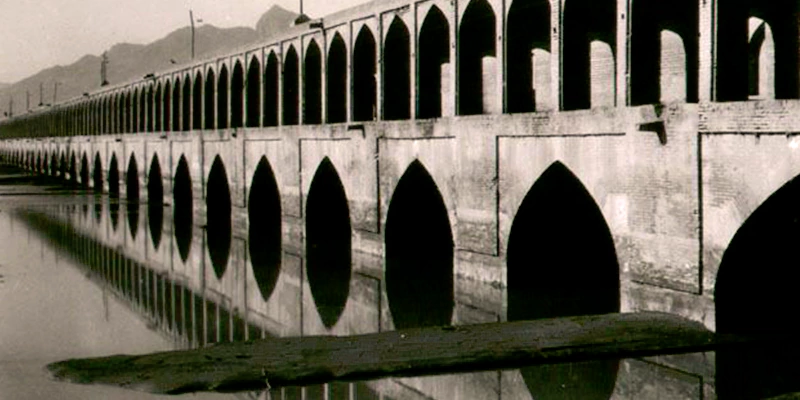
The Architectural aspects of Sio-Se-Pol
An incredible example of Safavid architecture that successfully combines beauty and functionality is the Sio-Se-Pol bridge. The bridge has 33 spans, giving it a distinctive, repeating rhythm and symmetry that have fascinated onlookers for centuries. Larger arches span the river, while smaller arches sit atop the bridge, providing an upper corridor for pedestrians. The arches' sizes vary. People can travel the bridge on two levels thanks to its dual-level design, either along the riverbanks or above, where they can take in views of the surrounding area and the river below.
The bridge was constructed mostly of stone and brick, which were selected for their strength and beauty. A sense of balance and harmony is produced by the arches' splendid curves and the bricks' detailed placement in complex patterns, making this bridge a source of Iranian pride. When the arches are lit up at night, the bridge becomes a sparkling sight, its reflection glowing in the water below. The bridge's architectural beauty is enhanced by this interaction of light and shadow, which also gives it an almost mystical quality that has inspired poets, artists, and tourists.
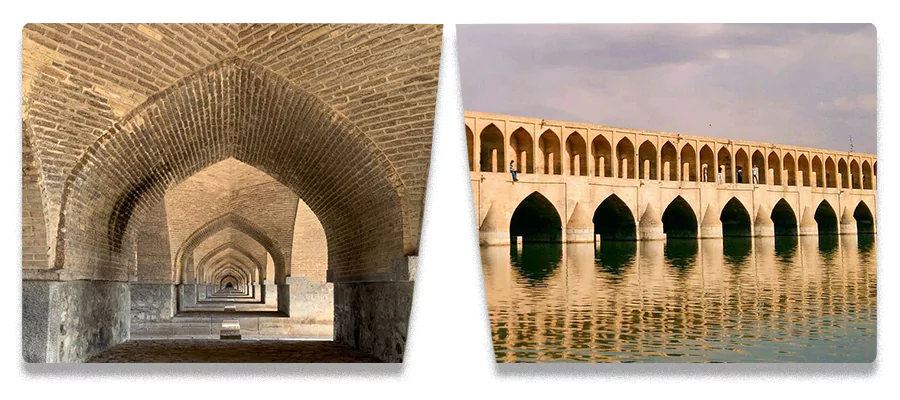
Sio-Se-Pol's social interaction-focused design is one of its unique qualities. In addition to providing a means of transportation, the bridge was designed to provide a gathering spot for Isfahan residents to socialize and take strolls along the Zayanderud. It was a well-liked gathering place because of the many dark corners and seating sections inside the arches that promoted rest and conversation. The bridge's design offers a social element to its architectural significance by reflecting the Safavid emphasis on creating shared spaces that encourage interaction.
Cultural Importance of Sio-Se-Pol
Because it reflects the ideals of Persian architecture and the Safavid dynasty's vision, Sio-Se-Pol has enormous cultural significance. Isfahan, known as "half the world" because of its cultural prominence, was a flourishing center of philosophy, literature, and the arts in the 17th century. A product of this booming period, Sio-Se-Pol represents the glory and artistic sophistication of Safavid governance. The bridge has long been a cultural icon that followed gatherings, particularly during Nowruz, the Persian New Year, whose symbol is Haft-Sin, when it is the center of festivities with lights, music, and performances that turn it into a vibrant public area.
Why was Sio-Se-Pol constructed?
In order to consolidate power and highlight the greatness of the Safavid Empire, Shah Abbas I had a bigger plan for Isfahan, which included the building of Sio-Se-Pol. The bridge was constructed as a component of Chahar Bagh Avenue, a magnificent thoroughfare intended to showcase Isfahan's wealth and cultural sophistication. The gardens, palaces, and mosques that lined the avenue symbolized Persian culture's aesthetic values and the Safavids' dedication to designing aesthetically pleasing and useful public areas.
Sio-Se-Pol was essential to this urban plan because it connected important parts of the city, improving Isfahan's connectivity and boosting its prestige as a modern city. The bridge was positioned to facilitate trade and interaction between various cultural communities by linking the central area of Isfahan with the Armenian neighborhood of New Julfa. This openness developed a multicultural society, including distinctive Iranian traditions and customs within the empire, and replicated Safavid tolerance for various racial and religious groups. Sio-Se-Pol served as both a physical structure and an infrastructure part, bridging both geographical and cultural divides. It was an integral part of the city's lifeblood.
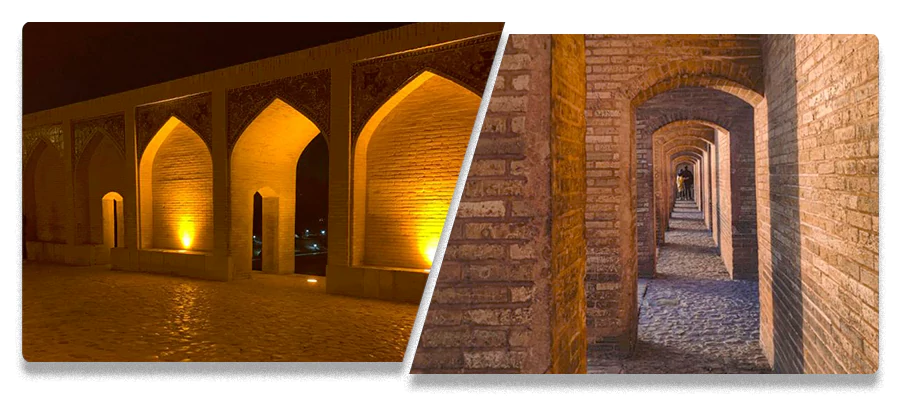
Sio-Se-Pol Facts
The famous Sio-Se-Pol, also known as the "Bridge of 33 Arches," was constructed in Isfahan, Iran, in 1602 during the Safavid dynasty, which Shah Abbas I ruled. One of the longest bridges of its era, the bridge spans the Zayanderud River and is roughly 295 meters long and 13.75 meters wide.
Notably, it is a social and cultural gathering place, hosting celebrations during festivals like Nowruz. The bridge has served as a central part of Isfahan’s urban landscape for over four centuries, reflecting Safavid engineering skills and social vision. Despite facing environmental challenges due to droughts in recent years, Sio-Se-Pol remains a symbol of Persian architectural mastery and a beloved landmark, attracting both local visitors and tourists alike.
Last Words of Cyruscrafts on Sio-Se-Pol
More than just a triumph of architecture, the Sio-Se-Pol bridge is a reminder of Iran's rich cultural heritage and the Safavid era. Sio-Se-Pol embodies Persian art and culture with its elegant arches, advantageous urban location, and function as a social hub. Its construction turned Isfahan into a representation of Persian greatness, reflecting the aspiration and sophistication of Shah Abbas I's vision for the city. As a living reminder of a time when Isfahan was a flourishing center of knowledge, beauty, and community, Sio-Se-Pol has evolved into a cultural landmark that inspires poetry, art, and reverence.
As a timeless representation of solidarity, Sio-Se-Pol keeps bridging the past and present, allowing visitors to follow in the footsteps of the past while appreciating the craftsmanship and vision of its creators. Sio-Se-Pol is a timeless icon that connects the beauty of Iran's past with its hopes for the future, whether it is as a monument to architectural mastery, a cherished gathering place, or a source of poetic inspiration.








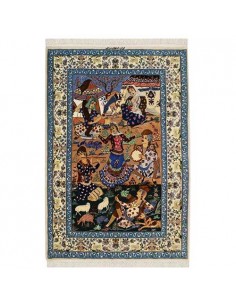

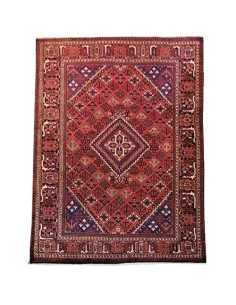

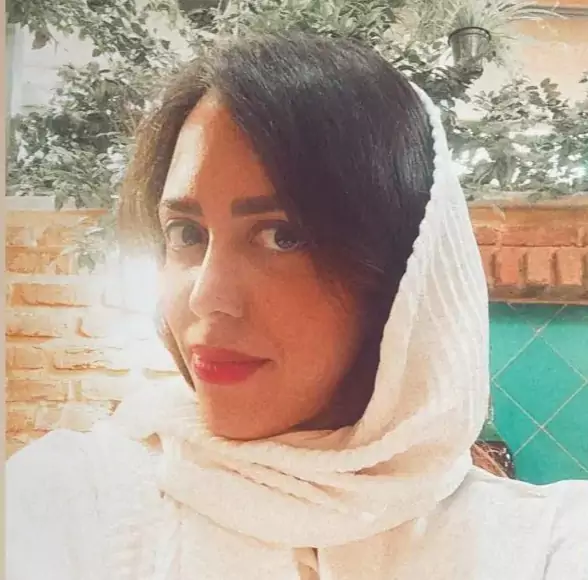
Comments (0)